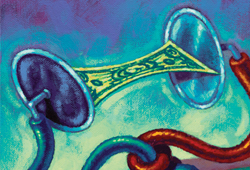 Megan McArdle argues that if healthcare reform includes a public plan, it might mean a reduction in service for a lot of people with severe problems:
Megan McArdle argues that if healthcare reform includes a public plan, it might mean a reduction in service for a lot of people with severe problems:
Surely the point of worry is that many millions of people will be forced into the public system, because its existence will encourage their employers to dump their health care plans. Since private systems have so far found it virtually impossible to deny many treatments for long, this will mean that millions of budget constrained people will find themselves with less available treatment than before.
….This is not a crazy worry. What America is best at is delivering a lot of complicated care in extremis, and “quality of life” treatments. What European countries are best at is delivering a lot of ordinary care for the sorts of things that afflict people from 0-50, which is why most of the Europhile journalists writing about Europe genuinely have very good experiences to report. I’d rather be here to have a hip replacement, but I might rather be in the Netherlands to have a baby. Doing something moderately ordinary here is a hassle. Doing something extraordinary there is often not possible for the overwhelming majority of citizens, though that depends on what, and in what system.
Boy, I’d sure like to see some backup for that. If by “extraordinary” Megan means the most extreme 0.001% of procedures, then maybe she’s right. Maybe. But nothing I’ve read about Western European healthcare systems makes me believe that there’s any substantial difference between the way they treat severe illnesses and the way we do it. And no systematic difference in success rates for such treatment either. Nor should this come as a surprise, since most extreme medicine is practiced on older patients, who are covered by a public plan both here and in Europe.
No system is better at everything than any other system. There are always tradeoffs. But the overall evidence is crystal clear: European state healthcare systems, taken as a whole, provide better care than America’s hodgepodege system at about half the price. If we adopted their approach and combined it with American funding levels, we’d have a system better than either. And rich people who wanted to pay for massive amounts of special care not covered by the state would still be free to do so.
Anyway, speaking of healthcare, the 24-hour bug I thought I had yesterday seems to be more like a 72-hour bug. Blah. Blogging will probably be a little light today again.

















